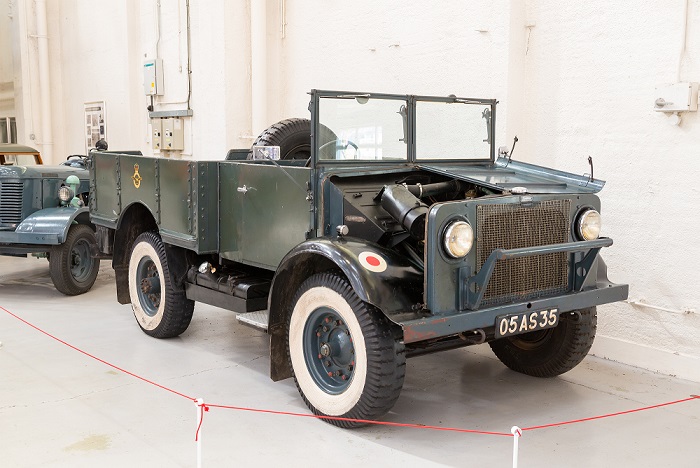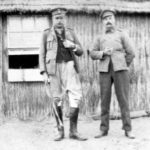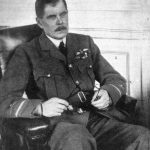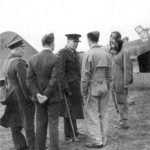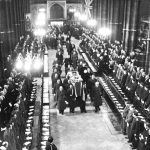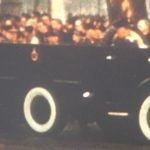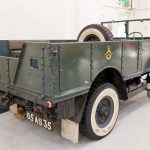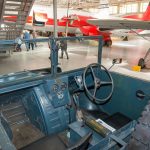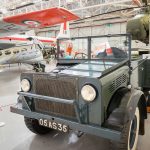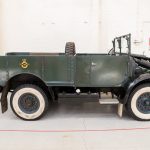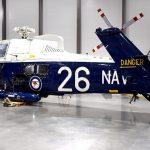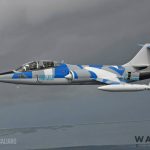RAF Museum Cosford in Shropshire, England has recently placed an important vehicle on display which helps illustrate the history of the Royal Air Force itself. Whilst this Bedford MWC 15cwt Truck may seem unremarkable, being a general purpose vehicle that served the British armed forces in many different capacities from the late 1930s through to the end of the 50s, this particular example was modified to carry the casket for Viscount Trenchard during his funeral in February, 1956. As many will know, Viscount Hugh Montague Trenchard was a brilliant and daring British Army officer who rose up to become the ‘founding father’ of Britain’s Royal Air Force, the world’s first independent air arm. He oversaw the RAF’s creation upon the merger of the Royal Flying Corps with the Royal Naval Air Service on April 1st, 1918, and became the very first Marshal of the Royal Air Force and Chief of the Air Staff. Following WWI, when the RAF was reduced in size from 280 squadrons to just 28, the service’s future as an independent air arm remained in doubt, but Trenchard’s maneuvering and steadfast action allowed the RAF to prevail. His influence over the service lingered for decades, indeed all the way through WWII and beyond. In addition, several senior officers in the U.S. Army Air Forces sought his advice on the appropriate processes for establishing the United States Air Force as an independent air arm following the war, such was the admiration with which they held him. So while the RAF Museum’s decision to display Trenchard’s funereal truck may seem of passing interest, it really does open up an avenue for exploring the fascinating story of his life, and that of the RAF as well.
The following press announcement from the RAF Museum offers further details about the vehicle…
After years in storage, the truck has undergone conservation work led by the Museum’s team of volunteers from the Conservation and Engineering team. This latest addition to the collection can now be seen on display in the Museum’s Hangar 1 in its original condition.
The Bedford War Department type truck was designed as a light utility military truck. During the Second World War period (1939-1945) nearly 66,000 examples were produced for service use. The RAF used them as general crew and transport trucks, and some were also made as anti-aircraft gun platforms and mobile water tanks.
The Museum’s example, registration 05 AS 35, was especially prepared to tow the trailer carrying the first Marshal of the Royal Air Force, Viscount Hugh Trenchard’s coffin at his funeral on 21 February 1956. The procession saw his coffin taken from the Air Ministry in Whitehall to Westminster Abbey where his ashes were laid to rest in the RAF Chapel.
The RAF Chapel at Westminster Abbey is dedicated to the RAF aircrew casualties of the Battle of Britain and Viscount Trenchard himself headed a committee to raise funds for a stained-glass window and the furnishing of this chapel. His ashes are interred there alongside Air Chief Marshal Hugh Dowding and Marshal of the Royal Air Force Arthur ‘Bomber’ Harris. A service is held in the chapel each year on the Sunday following Battle of Britain Day (15 September) to remember the RAF personnel who lost their lives during the Battle of Britain.
RAF Museum Cosford Assistant Curator, Clare Carr said:
“We’re delighted to add the Bedford MWC 15cwt Truck to our collection of vehicles on public display at Cosford. It was a versatile military vehicle and this particular example played an important role in Viscount Trenchard’s funeral, arguably the man who single-handedly laid the foundations for the Royal Air Force during the inter war years, earning him the affectionate title the ‘Father of the Royal Air Force’.
The truck was last on display for the RAF 50th Anniversary Royal Review at RAF Abingdon on 14/15 June 1968 and was acquired by the RAF Museum shortly after. Now, after more than 50 years in storage, the Bedford truck can be seen on display alongside other aircraft and vehicles in Hangar 1.”







